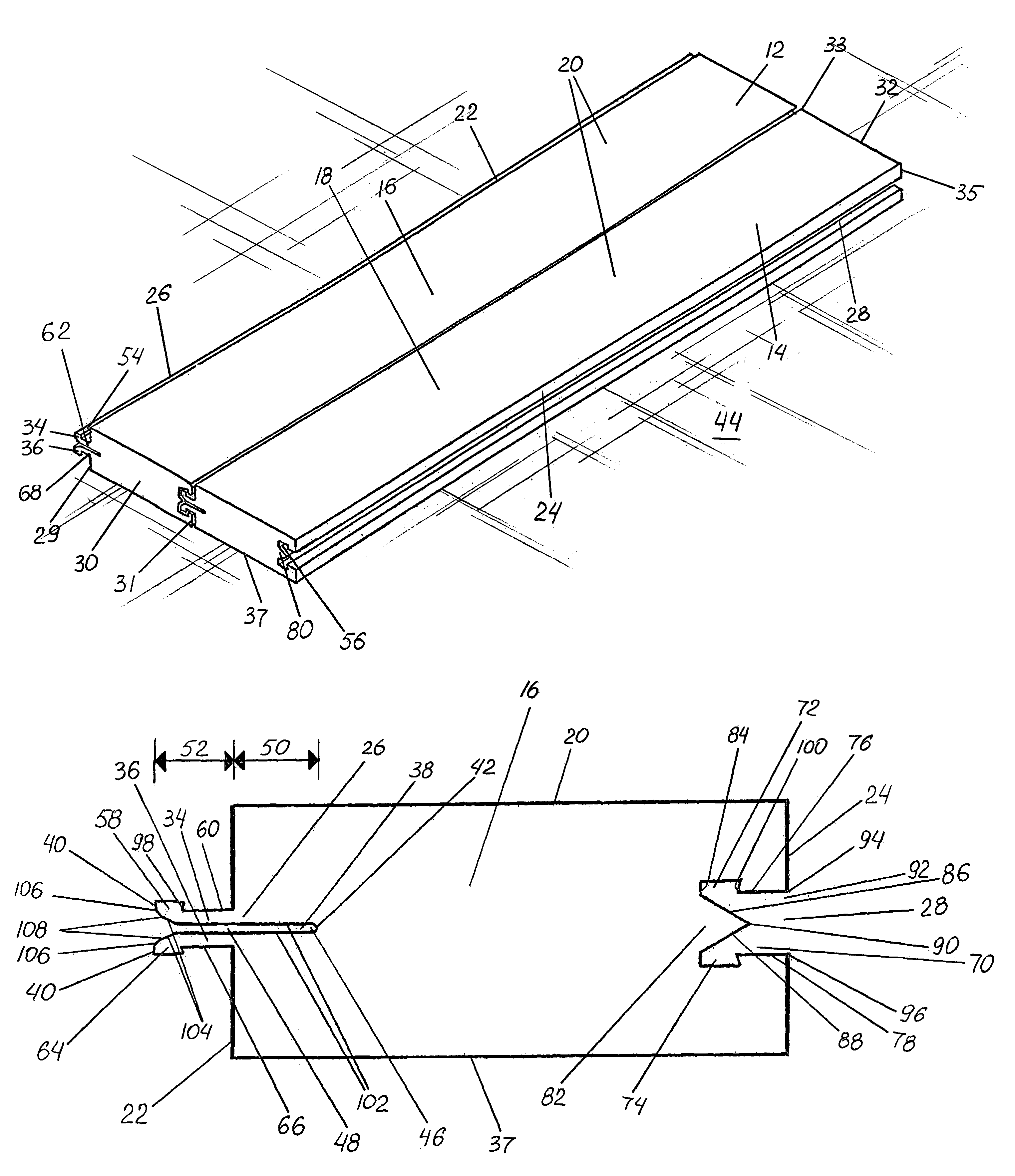Glueless panel locking system
a panel locking and glueless technology, applied in the direction of dismountable cabinets, mechanical equipment, cabinets, etc., can solve the problems of unfavorable installation of solid flooring below ground level or directly over concrete slabs, uneven thickness of boards, so as to reduce sound transmission and moisture movement through the flooring, eliminate gaps, and simple and inexpensive construction
- Summary
- Abstract
- Description
- Claims
- Application Information
AI Technical Summary
Benefits of technology
Problems solved by technology
Method used
Image
Examples
Embodiment Construction
[0045]The figures illustrate preferred embodiments of an improved locking system 10 for mechanically joining together a plurality of components 12,14 to form an article of construction such as a floor or shelving. Components 12,14 are held together without utilizing an adhesive such as glue or fasteners such as nails or staples.
[0046]FIG. 1 is a perspective view of components 12,14 joined by locking system 10 where components 12,14 comprise first and second panels 16,18. Each panel 16,18 has an outer surface 20, a first side edge 22, and a second side edge 24. Panels 16, 18 are provided with first and second locking members 26,28. As shown, first locking member 26 is positioned beneath outer surface 20 extending along the length of first side edge 22 from a first end 30 of each panel to its second end 32. First end 30 extends from first-edge point 29 to second-edge point 31. Second end 32 extends from first-edge point 33 to second-edge point 35. Second locking member 28 is also posi...
PUM
| Property | Measurement | Unit |
|---|---|---|
| angle | aaaaa | aaaaa |
| flexible | aaaaa | aaaaa |
| length | aaaaa | aaaaa |
Abstract
Description
Claims
Application Information
 Login to View More
Login to View More - R&D
- Intellectual Property
- Life Sciences
- Materials
- Tech Scout
- Unparalleled Data Quality
- Higher Quality Content
- 60% Fewer Hallucinations
Browse by: Latest US Patents, China's latest patents, Technical Efficacy Thesaurus, Application Domain, Technology Topic, Popular Technical Reports.
© 2025 PatSnap. All rights reserved.Legal|Privacy policy|Modern Slavery Act Transparency Statement|Sitemap|About US| Contact US: help@patsnap.com



